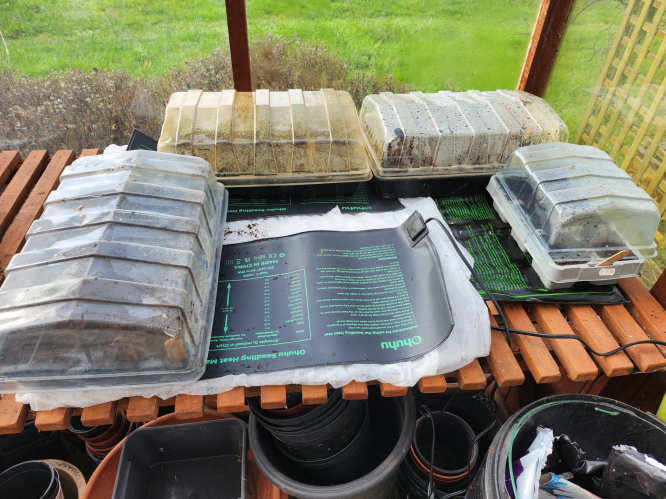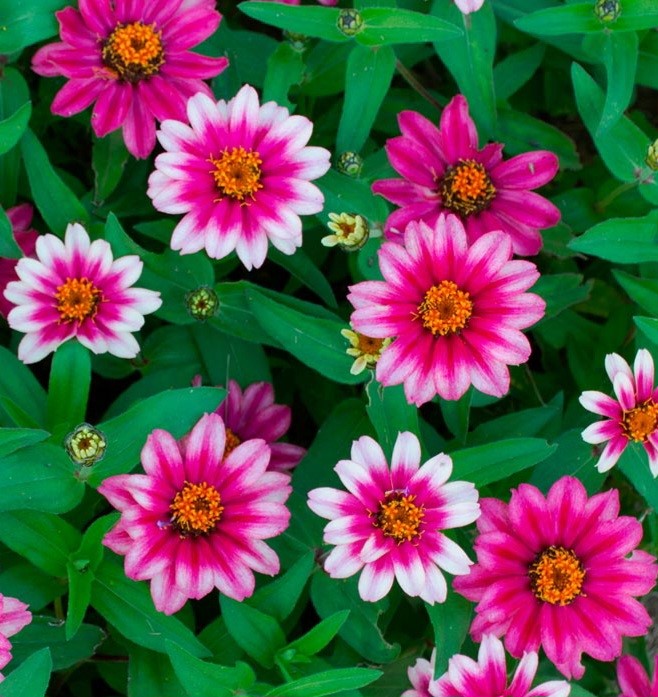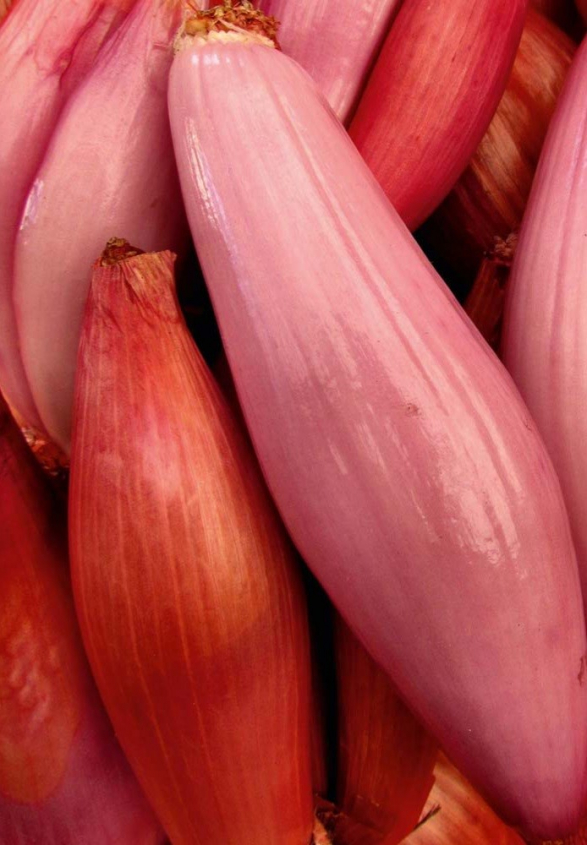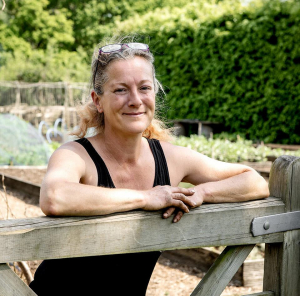As last month was the wettest February the UK has experienced in the last 258 years, I’m hoping for some drier weather this month. Even so, my neighbours have been taking advantage of the break in the weather to mow their lawns, a job I’ve not got around to yet. The thought of unclogging wet grass from the mower in the drizzle is particularly unappealing to me at the moment, and so I’ve been mostly holed up in the greenhouse, planting seeds and procrastinating on the grass-cutting front. With the February sowings mostly done (chillies can require up to 120 days from germination to fruiting), I can concentrate now on the March batches. I purchased a couple of electric heat mats for the greenhouse last month to speed up germination and had a great deal of success, enabling me to push seeds through in fairly quick rotation, so definitely a worthwhile investment.

Though temperatures are still pretty low this month, outdoor sowings can also be started. Covering the area required for planting with horticultural fleece or cloches for a couple of weeks will warm the soil to give a good head start to anything needing to be sown direct, and keeping fleece over carrots, for example, is one way to deter pests later during growth without the need for chemical use.
In the Borders
With the warming of the soil comes the emergence of the inevitable weeds! Tidying up borders, mulching and feeding is a priority at this time of year, and I generally use leaf mould collected the year before last. This adds nutrients back into the earth and suppresses any potentially germinating weed seedlings. Deadheading the Spring flowers is still beneficial as they should keep going for a couple of months. If pansies or viola have got a bit leggy, they can be nipped out to any new growth at the base and fed which will give them a new flush of flowers on a more compact plant. Summer flower seeds can be sown now, if you haven’t started Pelargonium yet, this is the last month to do this, but Cosmos, Arum lily, Nasturtiums and Sunflowers are all good to go. I picked up a lovely Zinnia variety called Cherry Profusion which is really eye catching, and as they are drought tolerant, don’t require too much looking after once established.
Forced bulbs, like hyacinths which were flowering over December or January can be planted outside, as can summer bulbs such as gladioli and lilies. Daffodils can be deadheaded, but leaves should be allowed to die back naturally. Snowdrops can be lifted, split and replanted while they are still green to encourage them to naturalise in other parts of the garden. Cornus and salix can be pruned. And yes. Lawns should be given a high cut...

In the Veg Patch
If you have been able to warm the soil, some outdoor crops can be sown this month, carrots, parsnips, spinach, onions and shallots, for example. While onions and shallots can be bought as sets, I’ve grown mine from seed because I wanted specific varieties. Shallot ‘Simiane’ is a sweet banana shallot, and not available in sets, so I started these last month in the greenhouse.
As mentioned previously, it’s worth keeping fleece over these to avoid pests, such as carrot or onion fly. Another tip is to try ‘Companion Planting’. Spring onions grown in between carrots can also help to deter pests by disguising the carrot smell, for example. I also grow basil in with the tomatoes as the strong scent deters aphids, so herb sowing is another priority for me at this time, and looking forward to trying the lemon coriander I’ve managed to get hold of!

And finally, potatoes can be planted! These have been chitting away since the beginning of last month, though they may still need protection from the odd frost. In an effort to reduce plastic use, I’m going all out on the potato bags this year! Also handily mobile and reusable and negating the need for back-breaking digging of trenches! Winner!
Happy gardening
Sara














